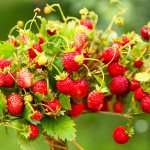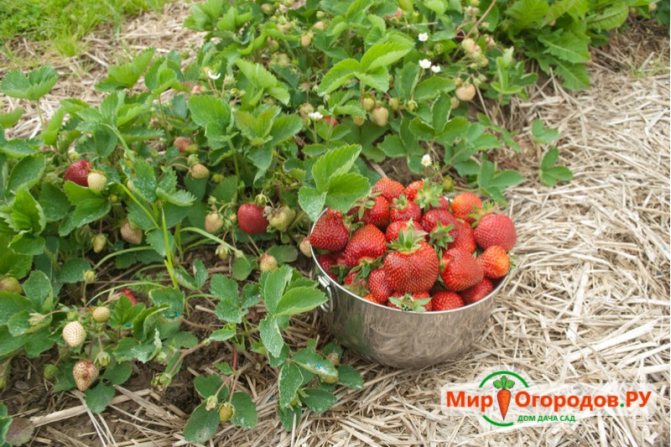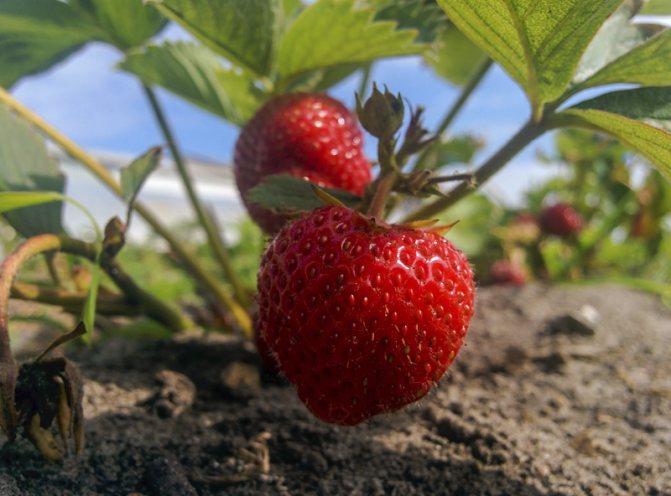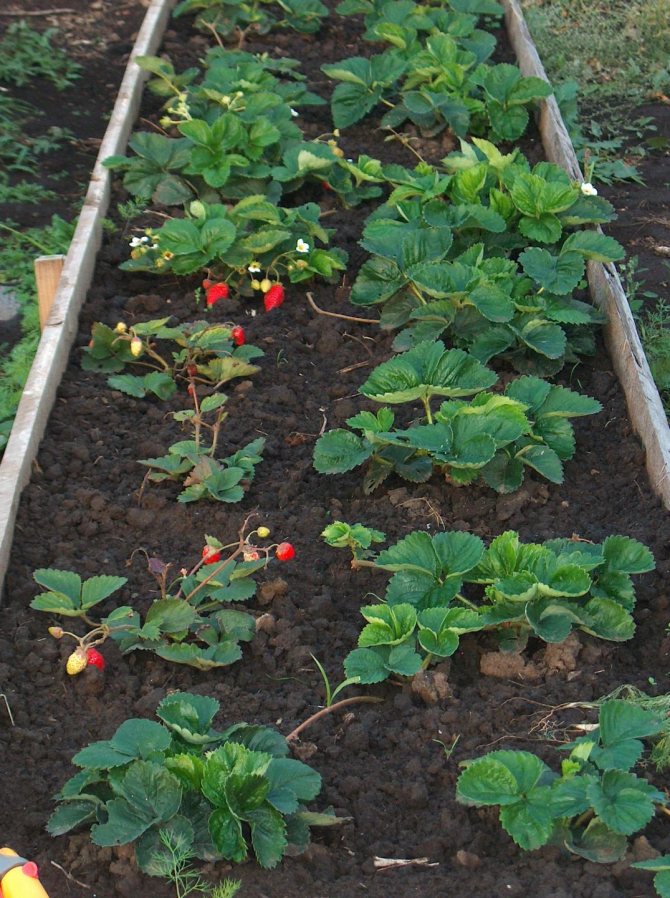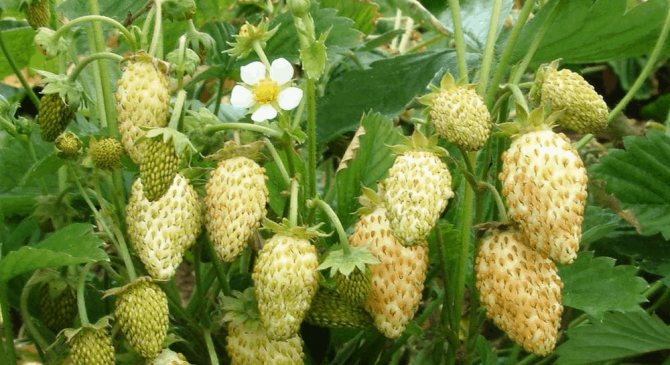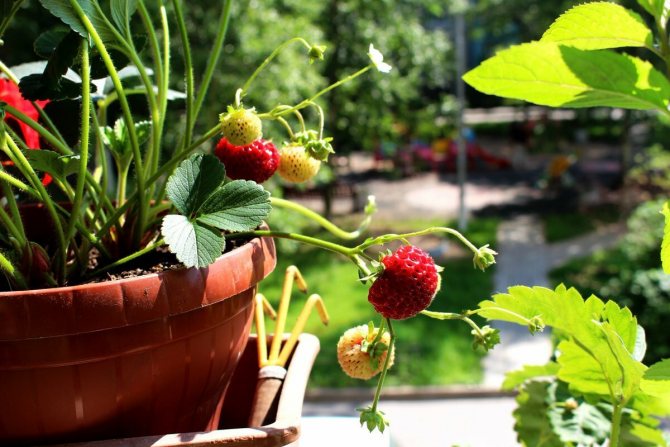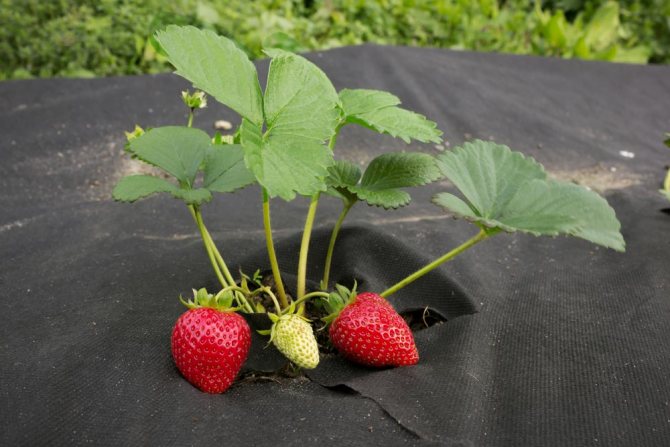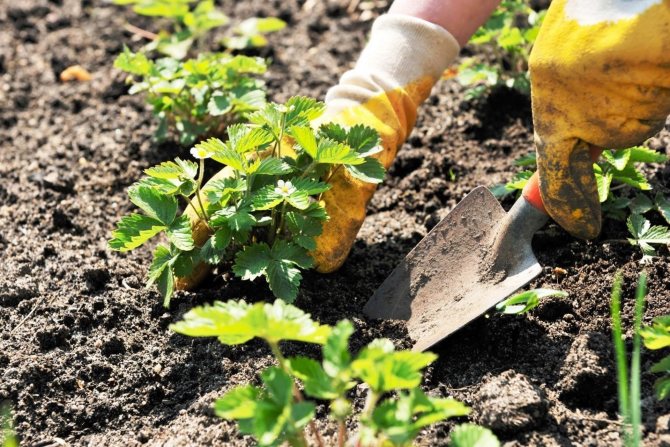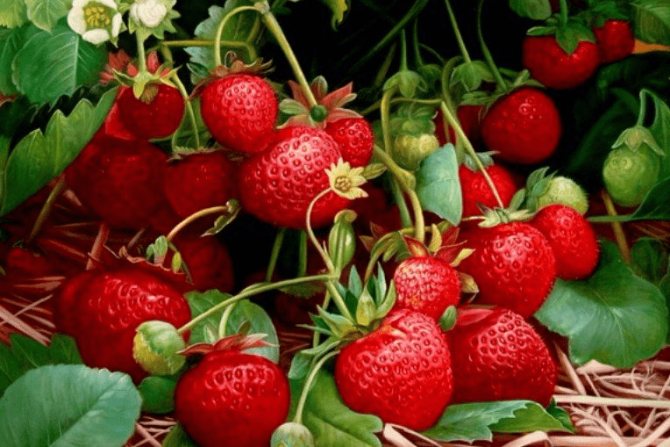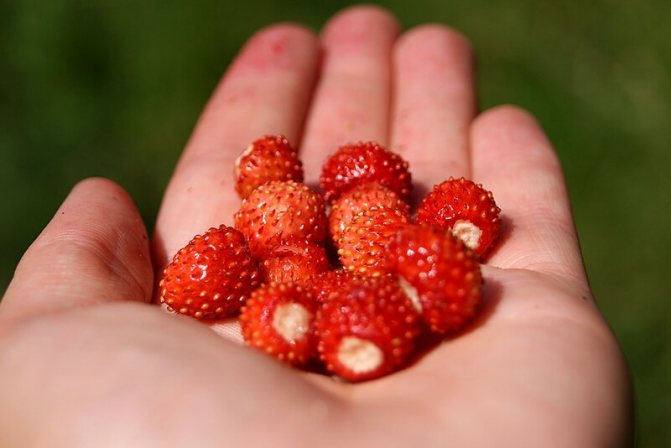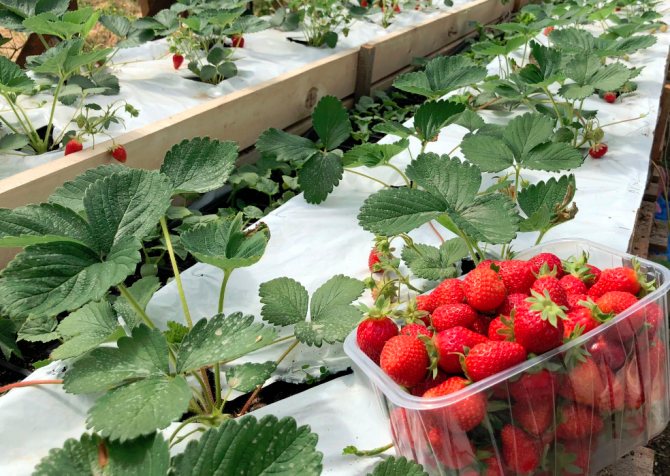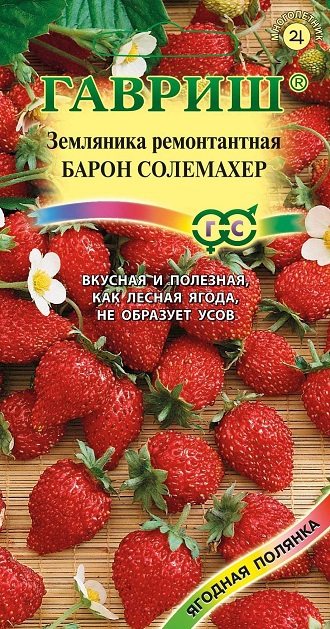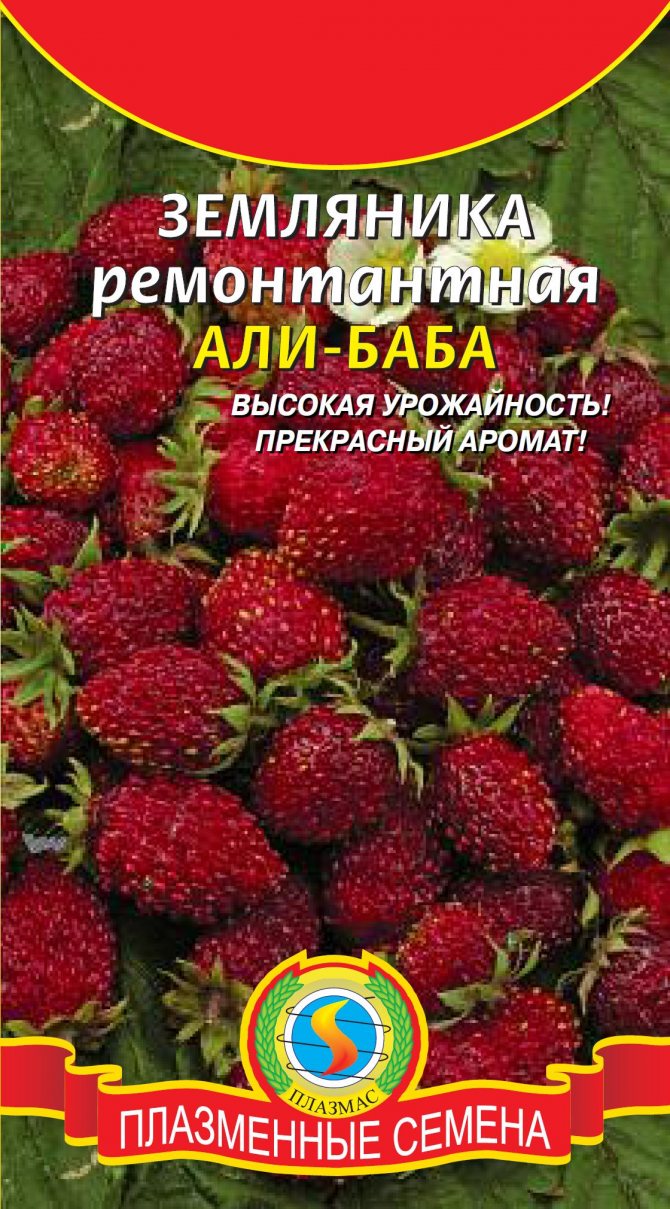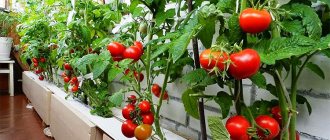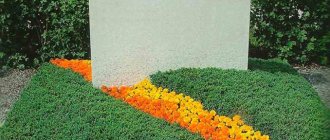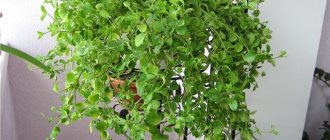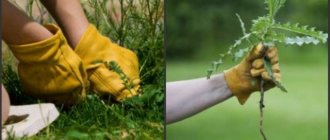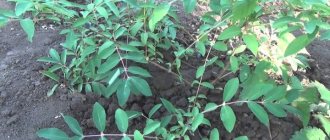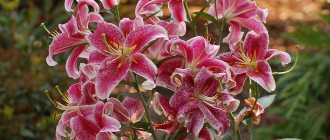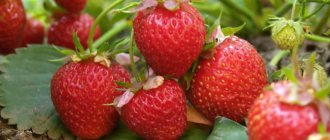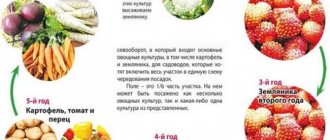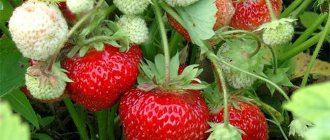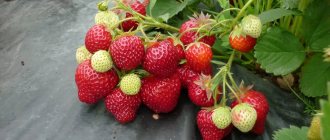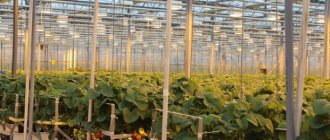Description of remontant strawberries
Repaired plants are those that can bear fruit throughout the growing season. Some berry plants (raspberries, strawberries, strawberries) have this feature.
All homemade varieties of garden remontant strawberries can be divided into 3 main groups, depending on the length of the day at which they form buds. There are long day varieties as well as short and neutral varieties.
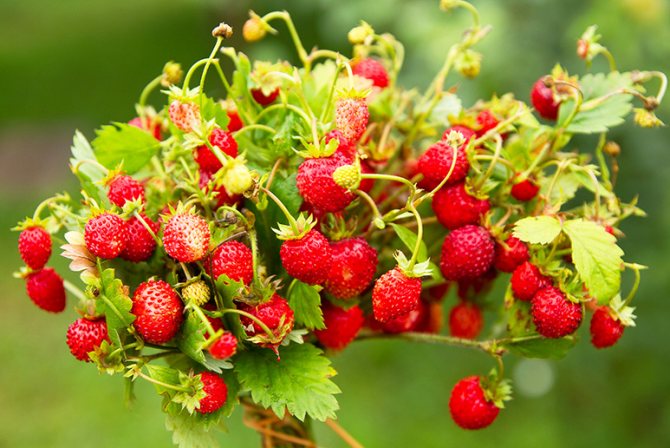
Strawberry remontant
The remnant strawberry, which is a type of long daylight hours, forms buds, regardless of the length of daylight hours. This period lasts from mid-May to mid-June. Fruiting occurs twice in the summer season. The first crop is harvested in July, the second can be expected in August-September. During the first fruiting period, the main part of the crop is harvested (60 to 90%). This collection is distinguished by the large-fruited berries.
In representatives of the varieties of remontant strawberries, belonging to the type of long daylight hours, fruit ripening also occurs twice a season. The first time is in July, the last one is in August-September. But, unlike strawberries of the first type, such a plant during the first fruiting allows you to collect only a small part of the berries, while in August-September it is possible to collect from 60 to 90% of the total harvest. Productivity largely depends on the age of the strawberry bushes.
Representatives of neutral day varieties begin to bear fruit from spring until the end of the growing season. Their flowering is cyclical and begins every 6 weeks. As a result, it is possible to get 4 harvesting waves. This greatly increases its yield compared to other varieties.
Pros and cons of berries
Mustacheless strawberries have advantages and disadvantages. It is called remontant strawberry, this designation of the culture's ability to bear fruit more than once a year. Repaired strawberries lay fruit buds during daylight hours of any length. The only condition is to provide a light period for the bookmark of at least 6 hours.
The main advantages of beardless strawberries:
- high yield rate;
- minimum requirements for conditions for growth and fruiting;
- taste of berries;
- a wide range of varieties;
- limited planting space.
Among the disadvantages is the need for frequent planting, as well as the difficulties in breeding in order to preserve a certain variety.
Advice! When growing beardless strawberries in the southern territories, one should take into account its intolerance to high air temperatures.
Growing from seeds at home
Strawberry remontant (varieties)
You can grow remontant strawberries with seedlings purchased in a garden nursery. Also, remontant strawberries grow well from purchased seeds, planting and care are painstaking and require compliance with the moisture level of the soil substrate (70-80%).
After spreading the seeds on wet soil, they are covered with sand and lightly sprayed, the container is covered with glass or a plastic bag. In central Russia, planting begins in mid-February, in warmer regions - 2 weeks earlier.
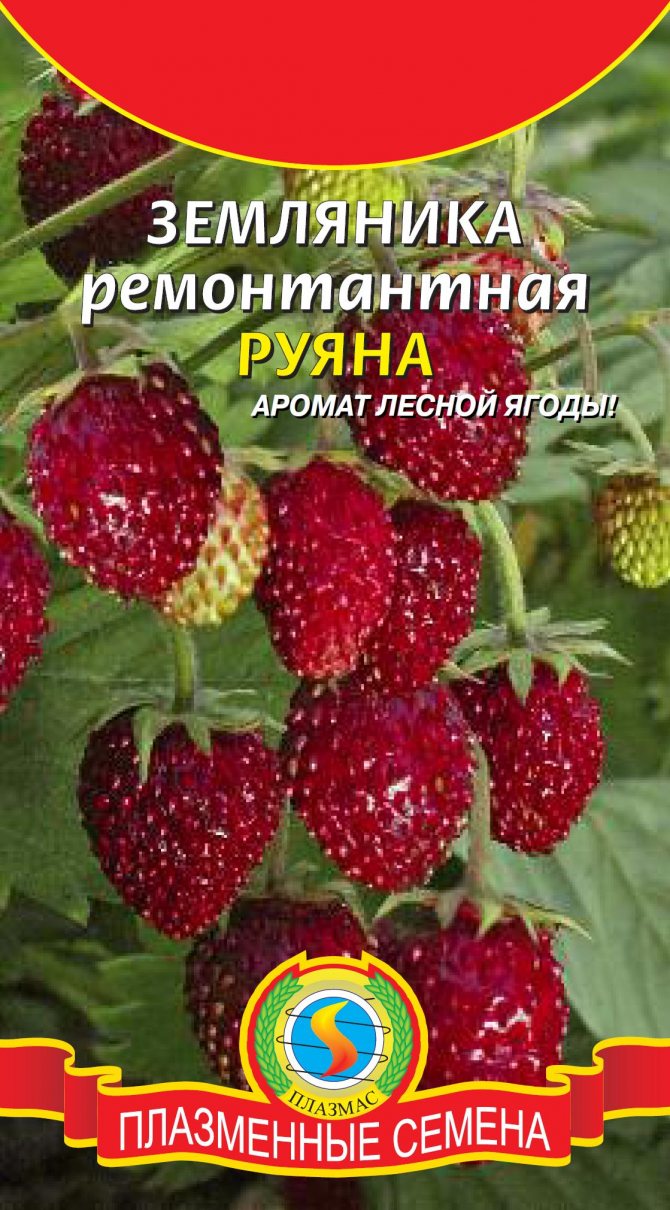

Strawberry remontant seeds
The soil should be slightly damp until germination occurs. The temperature in the apartment is maintained within 18-20 degrees Celsius. After 2 weeks, the first seedlings appear. After that, the container with the planted seeds is placed on the windowsill to provide access to the sun's rays.
Landing scheme
After the appearance of 2-3 leaves, the seedlings dive. This procedure is carried out approximately 45-60 days after sowing the seeds. Seedlings are transplanted into separate pots or into another box, leaving 5 centimeters between the plants, deepening by the same amount at which it grew in a common container.
2 weeks before planting in open ground, the seedlings are hardened. It is taken out into the air in the daytime to adapt to natural growing conditions. Only after that is it transplanted to open beds.
Growing and care
To grow remontant strawberries and get a harvest, you must follow the basic rules of maintenance:
- Strawberry bushes are arranged in rows, at a distance of 30-40 centimeters.
- For row widths, a distance of 1.2 meters is sufficient.
- Maintaining an average soil moisture level is considered an important condition for cultivation.
- During the period of growth and budding, the soil is fertilized with ash or fed with nitrogen-containing complexes.
- Watering should be constant and moderate.
- To obtain an additional volume of oxygen by the root system, it is recommended to loosen the soil after each watering.
- Leaves on which redness appear are regularly removed along with the cuttings.
Outdoor planting
It is recommended to plant remontant strawberries after such crops:
- radish;
- legumes;
- beet;
- garlic;
- parsley;
- calendula;
- mustard.
Mustache remontant strawberry (best varieties)
You should not plant this plant on the ground on which it was previously grown:
- tomatoes;
- cabbage;
- potatoes;
- cucumbers;
- raspberries.
Keep in mind! The selected area should be well lit by sunlight. It should not collect water. The soil should be selected sandy loam with a neutral or slightly acidic pH level. Loamy soil is suitable.
Planting seedlings in spring
Planting in open ground is carried out from the second decade of May. Planting of remontant strawberries before winter begins from the end of August until September. Planting and caring for garden remontant strawberries begins with soil preparation. For planting in the spring, soil treatment is done in the fall, when planting in the fall, the soil is prepared in the spring. To do this, they dig up the earth, add humus or compost, as well as wood ash.
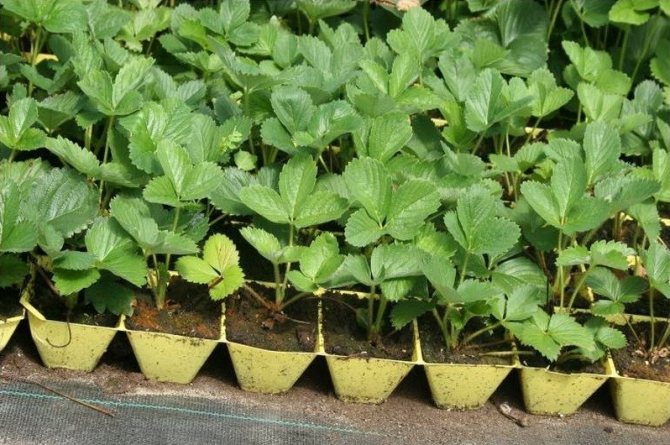

Planting strawberries for seedlings
Approximately 30 days before planting seedlings, fertilization is carried out: 20 grams of potassium sulfate and 40 grams of superphosphate are used per 1 square meter. You can use the finished preparation Kaliyphos (1 tablespoon per 1 square meter is enough).
Landing scheme
Planting seedlings in the ground is carried out in two main ways:
- Kovrov. With this method, a planting scheme is used, in which a distance of 20x20 centimeters is left between the plants.
- Private. Plants in a row should be planted at a distance of 20-25 centimeters, leaving a row spacing of 70 centimeters.
Planting is carried out on a cloudy day. Preliminarily, holes are made on the soil and thoroughly watered, then a seedling is placed there (preferably together with a lump of earth). In one hole, 2 plants can be planted at the same time.
Planting
The soil for strawberries is prepared in advance. Fertilize, lime. Do not plant after tomatoes, eggplants, potatoes. Grows well after onions, carrots.
The recommended width of the beds is 1.2 m, in a row - 30 cm. The rows are spaced 40 cm apart. Next year the bushes will grow and cover almost the entire territory. It will be easy to look after them.
Planted at a time when the sun does not hit the leaves. Ash, superphosphate (1 tbsp. L.) Or one of the chemical fertilizers (at the specified rate) are added to the wells. Sprinkle the fertilizer with soil, then it will not burn the roots of the plant. Pour 1.5 liters of water, level the roots. Sprinkle with earth so that the growth point remains on top.
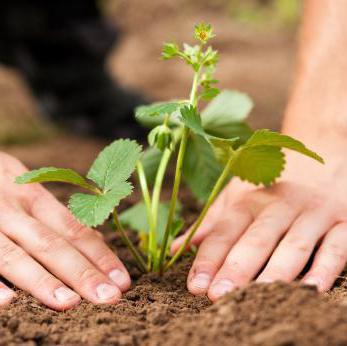

The bushes adapt for a week, but soon they begin to release young leaves. In September, they produce weak berries. This will allow the grower to taste the variety. But the bush will give the main harvest only from next year.
Each of the leaves lives for 2 months. Then it needs to be removed.
Gardeners' reviews are not advised to do this too early in the spring. Otherwise, young leaves can damage the spring frost.
How to care for remontant strawberries
Raspberry remontant care and cultivation
Many gardeners are interested in the question of growing and caring for remontant strawberries. After planting seedlings in the ground, it is advisable to mulch the soil with straw, sawdust or needles. This helps to maintain soil moisture. For this purpose, cover the soil with black agrofibre.
Proper care of strawberries planted in open ground consists in watering, loosening the soil, and removing weeds. It is necessary to feed her in a timely manner, as well as to carry out measures to protect against insect pests and diseases.
In early spring, ammonium nitrate is applied to areas with last year's strawberries. Then, at the beginning of summer, a second subcortex is carried out with ammonium nitrate.
In order to increase the number of fruits of remontant strawberries, the fruits are removed in autumn. Then the main autumn harvest will be much higher. But you should only take care of the bushes of a one-year and two-year cultivation period.
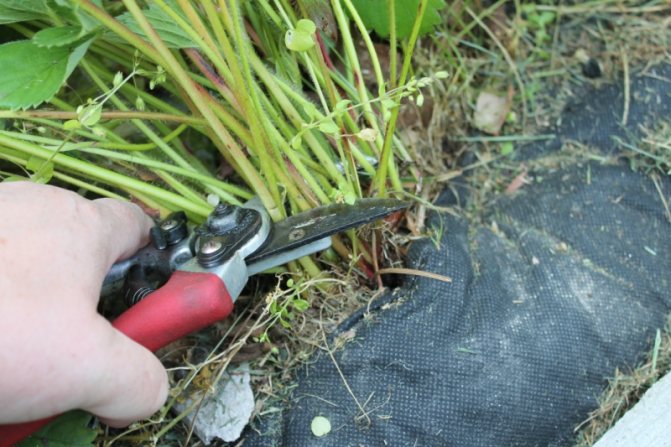

Wade
After the summer harvest, the plants should be prepared for the second fruiting period. The soil cover should be loosened regularly. Also at this time, foliage is cut. In this case, the gardener must be careful not to remove the apical bud from the plant.
On a note. Usually fruiting of remontant strawberries lasts 3 years. Then it should be transplanted. This period depends not only on growing conditions, but also on climatic conditions and soil composition.
Watering
After planting, the seedlings are watered in 2-4 days. For last year's planting, the irrigation period begins from the end of April, if there is not enough rainfall. For May-June, another 3-4 waterings should be carried out. In the subsequent period, such strawberries are watered every 2 weeks. Care should be taken to keep the soil moist at a depth of 2-3 cm. Dry soil means watering is required.
Note! Remontant varieties need moisture more than ordinary strawberries. Watering is especially required during fruiting.
Top dressing
If phosphorus fertilizers were applied during planting, then this amount will be enough for the plants for the season. Then humus is introduced in a volume of 2-3 kg per 1 square meter.
At the beginning of summer, strawberries are fertilized with 1-2 percent urea solution. When flower stalks appear, the beds are watered with a solution of chicken manure (8-10 parts of water). For one summer season, about 10 complex dressings are required. They are carried out until late autumn.
For strawberries, you can also use ready-made fertilizers: Kemiru, Crystallin or Solution.
Mustache strawberry
Among all varieties of re-fruiting strawberries, the remontant mustache is of particular interest. She is attracted by her unpretentiousness and the fact that she does not need to regularly cut her mustache. The question arises: "How does such a strawberry multiply?" And everything is simple - by seeds, which are harvested from ripe berries, as well as by dividing overgrown bushes.
Consider the most delicious mustacheless varieties.
- Ruyana. This variety resembles a continuous conveyor of flowers and ripening berries. 25 cm flower stalks will decorate any garden bed.Fruiting begins in the second half of June, lasts until the first frost. The berries are reminiscent of wild strawberries in aroma, but much tastier, larger in size.
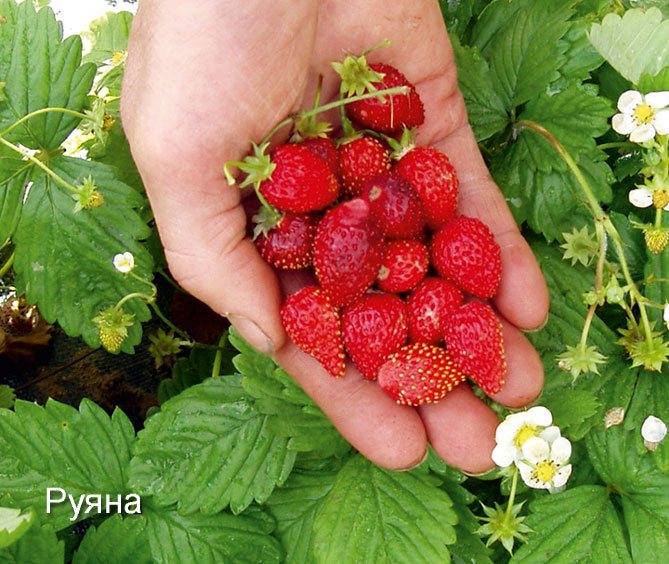

- Ali Baba. The variety will be of interest to fans of wild strawberries. The aroma is pronounced. The berries, although not large, are all as on selection, reach 7 g. The pulp is elastic white, the sweetness is in harmony with a slight sourness. Begins to bear fruit from mid-June, harvesting continues until late autumn. The yield of the variety is a pound of berries per season from one bush. The variety is resistant to pests, diseases, drought, heat, but needs regular watering.
- Alexandria. The berries are small, up to 8 g, with a pointed oblong shape. The color is deep red, the skin is shiny. The pulp is sweet, very aromatic. Fruiting in waves, from May to October. Productivity - 0.4 kg per season from a bush. Frost resistance, disease and pest resistance are high. Feels good on the windowsill.
- Forest fairy tale. Allows you to collect 1-1.5 kg of sweet aromatic products from 1 square meter of planting per season. Berries with firm pulp, small, 4-6 g. The taste is harmonious, the aroma is pronounced, notes of wild strawberries. Average resistance to frost, pests, diseases, drought. Practiced as an exotic potted culture. Will decorate any flower bed or garden bed. Indoors, it is grown to produce an off-season berry.
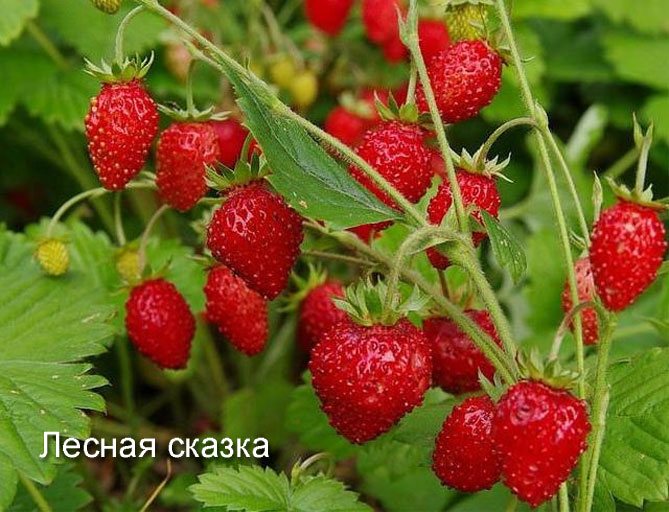

- Rügen. It is distinguished by a stable excellent fruit yield. The berries are small, 4-6 g, fragrant, very tasty, of the correct conical shape, they are well bought in the market. The pulp is tight, sweet. The variety is resistant to frost, undemanding to lighting. It winters well under the snow, tolerates snowless winters under light cover.
- Baron Solemacher. Early ripening productive variety. Enters fruiting early, ripens early. Yields a harvest throughout the growing season. The berries are small, from 3 to 5 g, dense, lying, well transported. The taste is harmonious, sweet, with a slight sourness. The aroma of wild strawberry is pronounced. High winter hardiness (up to -35 ° C), resistant to all diseases and pests. It tolerates heat well, badly - drought.
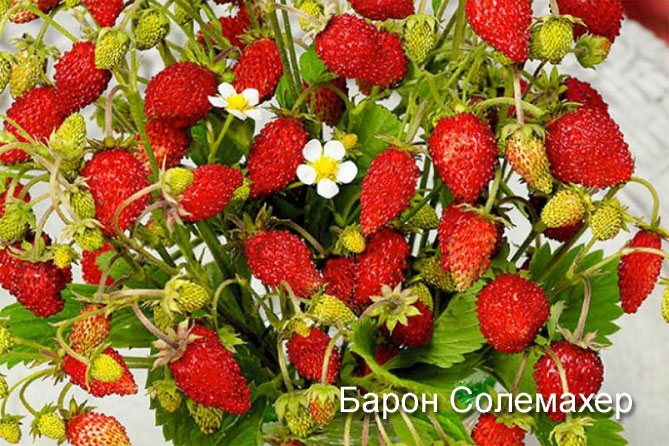

Transplanting remontant strawberries
There is no point in transplanting remontant strawberry bushes. Because her bushes live no more than two or three years, despite the very good care of her. But if the question arose about replanting them, then this should be done in the fall, no later than 20 days before frost.
If such a transplant is carried out in the spring, then remontant strawberries will not have time to give a summer harvest. If plants that have released peduncles are transplanted, then it is recommended to remove them from the bushes in order to accelerate adaptation.
Preparing for winter
Before the onset of cold weather, you need to carry out a number of measures to prepare for winter:
- remove all unripe berries;
Note: do it before the first frost. - cut leaves from each bush;
Advice: it is not allowed to cut them off with bare hands; for this purpose, only sharp garden shears should be used. - if there are bare roots, then they must be covered with earth;
- put a special material (non-woven) or straw on top of the beds.
You cannot remove snow from the beds, it is an additional layer of protection from the cold.
An important point: do not carry out all the activities at the first sign of a cold snap. Strawberries should be allowed to survive 2-3 frosts in their normal state.
Reproduction
In addition to breeding remontant strawberries by planting seedlings, it is propagated with a mustache. If it is necessary to enlarge the bed of remontant strawberries with the help of a mustache, its second harvest of the year will suffer.
During fruiting, for the first time in the summer, the most developed and strong bushes should be determined. Then their mustache is laid out in the grooves made next to it.The other mustache is cut from the mother bush.
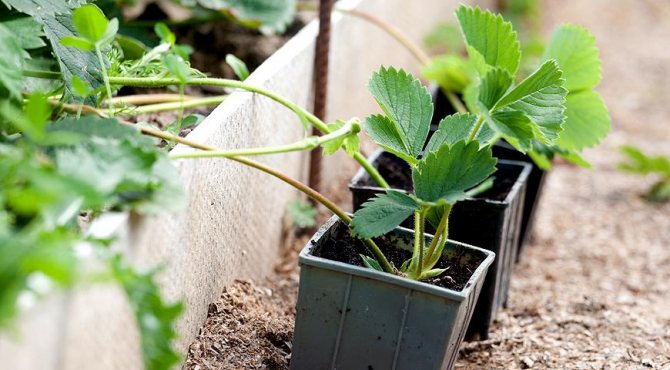

Reproduction
A significant procedure, done one week before the time the transplant is scheduled, is to trim the whiskers associated with the mother's bush.
You can also propagate remontant strawberries by dividing the bush. This method is used if there is not enough planting material. For this, strong plants are dug up, with a large root system. These are bushes from 2 to 3 years old. They are dug out in early spring or in autumn and divided into separate horns. Then they are planted in the soil in the usual way.
conclusions
- Repaired varieties bloom constantly until frost. Their yield is much higher than that of species without this quality. The repair strawberry can be either "mustache" or beardless.
- Mustacheless varieties reproduce only by seeds and division of the root system. Therefore, they bear fruit much more abundantly, but they must be planted every 4 years.
- When choosing strawberries or strawberries for the garden, one should also pay attention to the requirements of each species for external conditions. The yield will be higher if you select those varieties that are bred specifically for your climate.
Secrets of planting curly strawberries
Any strawberry in which the fruit is formed on the mustache can be curly. There are quite a few such varieties. It is grown both as a decorative type and for obtaining berries. It can be grown in open beds, as well as in greenhouses, on balconies and even in a room.
In these varieties, the mustache can be placed on a vertical structure or in such a way that it falls down. Curly strawberries are easy to care for. She does not need frequent weeding, and when harvesting, she does not need to bend low to the ground.
As a disadvantage of this variety, you can point out the need for frequent watering, as well as more complex preparation for winter time.
Small-fruited varieties of remontant strawberries
As the name implies, small-fruited strawberries do not bear much fruit, therefore they are often even called strawberries. Small-fruited varieties do not have a mustache, therefore their reproduction is carried out exclusively with the help of seeds. Despite its modest size, small-fruited strawberries are not inferior to large-fruited ones in taste.
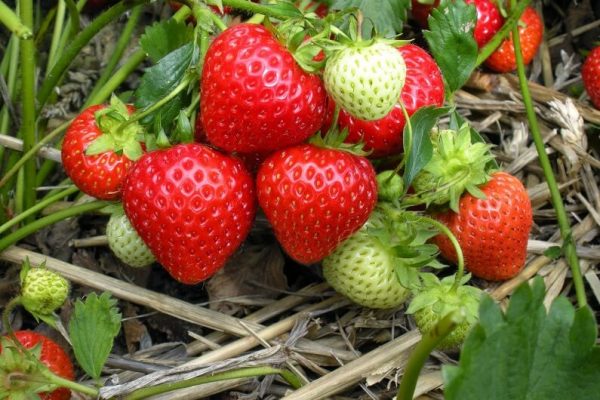

Small-fruited remontant strawberries are often called strawberries.
The main advantage of these strawberry varieties is the ability to constantly bear fruit until the onset of frost. Due to its frost resistance, small-fruited strawberries take root well in many northern regions of Russia. Ripe berries appear on the bushes until October, even if the plant is grown in an open area without any shelter.
The most popular small-fruited remontant strawberries are summarized in the table below.
Table 1. Small-fruited varieties of remontant strawberries
| Variety | Description |
| Alexandrina | A widespread variety in Russian gardens, obtained as a result of Swiss selection. The average weight of the berries is four to five grams. Ripe berries vary in color from bright red to deep red. Plants are unpretentious to care for and consistently give a good harvest (up to four hundred grams per bush) with minimal feeding. It is advisable to plant Alexandrina in well-ventilated areas, otherwise there is a risk of encountering fungal diseases of the bush and berries. At the first harvest, the fruits reach a mass of twenty grams. |
| Rugen land | A popular variety of German selection, bred in Rügen, in honor of which it got its name. The berries are elongated in shape, have a deep red hue when ripe. Despite the fact that the fruits have a rich sweet and sour taste, they are most often used to make jam. Aging bushes occasionally grow with a mustache. Suitable for cultivation by both amateur gardeners and commercial farmers.The variety needs periodic feeding and watering, which is reflected in its yield indicators. |
| Ruyana | A variety bred thanks to Czech selection and takes root well in Russian gardens. The average weight of the berries ranges from four to five grams. If you want to propagate strawberry bushes of this variety, it should be borne in mind that self-collected seeds do not carry the entire set of qualities of the variety. Therefore, there are only two ways to get new Ruyana bushes: buy seeds or propagate the plant by dividing the bush. The plant is immune to powdery mildew and botrytis gray. Due to its dense pulp, it copes well with transportation |
Baron Solemacher | Another variety of Swiss selection that has gained wide popularity among summer residents. The berries of this variety have a mass that is standard for all other small-fruited strawberries - about four grams. The fruits grow in a regular conical shape and, as they ripen, acquire a deep red hue. The bushes give a consistently good harvest for three to four years, and the fruits themselves are prized for their sweet, pleasant taste. The variety readily adapts to heat, but does not tolerate dry periods. Up to three kilograms of harvest can be harvested from one square meter |
Ali Baba | The main advantage of this variety is its yield - strawberries bear fruit in the first year. The bushes are considered stunted and grow up to fifteen centimeters, forming several multi-flowered inflorescences, on which red fruits soon appear. One bush brings up to five hundred grams of harvest. The average weight of such fruits is five grams. Ali Baba is resistant to dry periods and less susceptible to pest attacks. Best of all, the variety takes root in the climate of Central Russia. |
| Forest fairy tale | The domestic variety can be grown both outdoors and in pots. Bushes reach up to twenty-five centimeters in height. The berries have a traditional conical shape, sometimes rounded specimens are found. Under favorable growing conditions, one and a half kilograms of fruit can be harvested from one square meter. The advantages of this variety include good soil adaptation and high immunity to many diseases. |
A little about caring for small-fruited repair strawberries
Most of the procedures aimed at improving the quality and quantity of the strawberry harvest are directed to the soil, which at the time of the growth of the bushes is the main breeding ground for them. The manipulations that are carried out with the land during the summer season include the following:
- Mulching. By cultivating the soil with hay, straw or fresh sawdust, you will enrich the soil and prevent it from drying out. Also, gardeners have repeatedly noted that the soil is less prone to the cultivation of weeds;
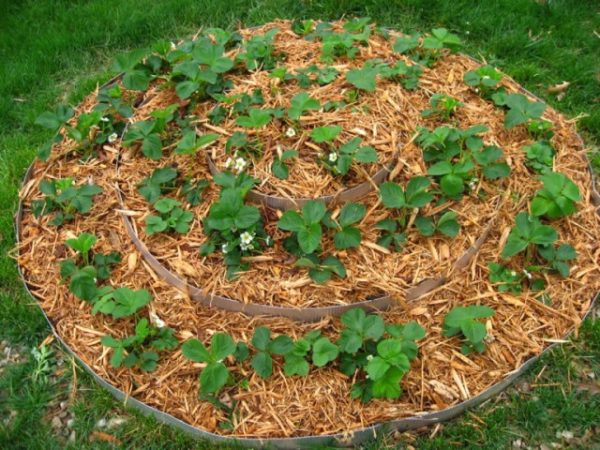

Mulching allows the soil to retain its nutrients at its best
- Regular watering. The frequency of soil moisture directly depends on the climatic characteristics of your region and on the phase of development of the bush. If in the summer season your garden is rarely irrigated by rain, you need to water the plants yourself every two to three days. When strawberries bear fruit, soil moistening can be done less often as the cold weather sets in;
- Loosening the soil between the rows. By digging up the soil, you will not only prevent it from drying out, but also "ventilate" the roots, giving them access to air. Please note that loosening is not performed at the time of fruiting - only on the days preceding ripening. If mulch is available, this step can be skipped;
- Weeding. Weeds do not threaten the life of the bushes, but they affect the taste of future fruits. Removal of these plants is carried out as needed.In addition to weeds, it is advisable to get rid of old leaves that turn reddish in the same way in a timely manner - this way, you will rejuvenate the bushes. In addition, the harvested leaves can be used as compost.
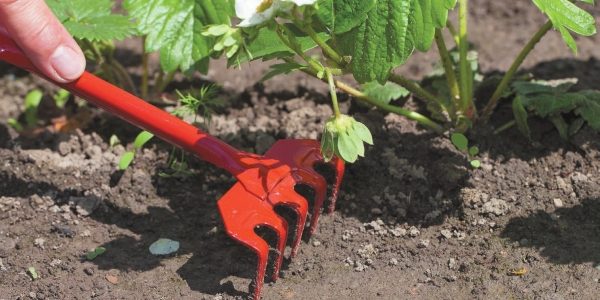

When loosening, it is important not to damage the strawberry bushes.
In addition to care, strawberries also require the help of a gardener in the fight against various pests. We will talk about the types of these pests and ways to overcome them below.
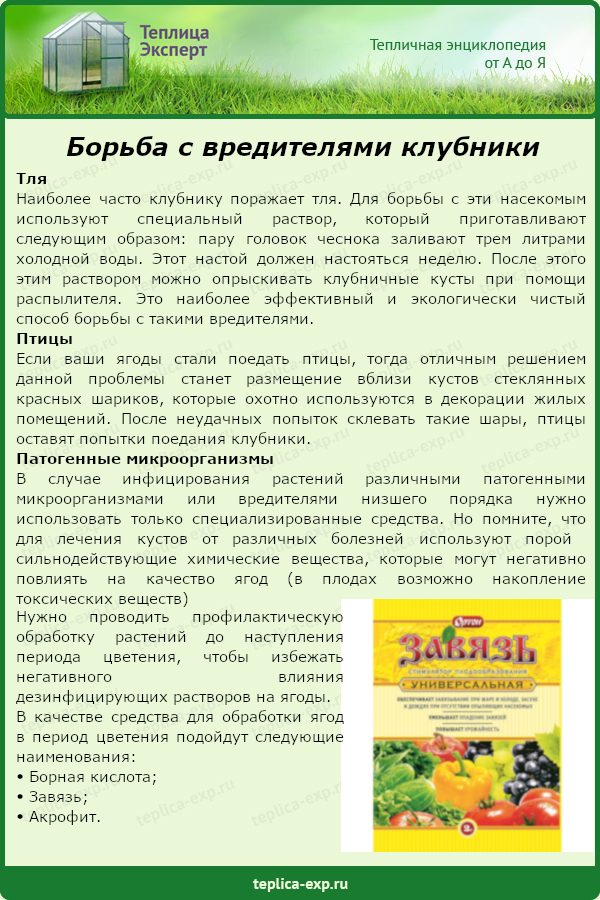

Strawberry pest control
Video - Care for remontant strawberries and their cultivation
Growing remontant strawberry Delitsian
One of the new varieties of remontant strawberries is Delitsian. It is bred by American breeders. It is a large-fruited variety with abundant and long-term fruiting, lasting almost until the onset of frost. Also, this variety can be grown at home in a special container.
The berries are very sweet. The weight of one fruit is up to 50 g. The inside of them has a whitish tint. Therefore, it is not recommended to use them for recycling. Due to the large number of whiskers in this variety, their reproduction is facilitated.
When starting the cultivation of remontant strawberries, it is necessary to take into account not only its taste, but also, if the summer cottage is far from the main place of residence, its transportability should be foreseen. Such varieties can be selected from the many proposed by breeders from around the world.
Agrotechnics
Mustache-free varieties of strawberries and strawberries have gained popularity due to their ease of care. During the season, there is no need for constant control over the movement of the whiskers and their growth over the area of the site. The bush grows in one place, tolerates winter without problems, but is prone to thickening, therefore, it needs to be thinned. To propagate a bush, you will also have to try.
Reparability is a property that allows the berry to produce a harvest throughout the summer period.
Depending on the genetic characteristics of the plant, either it blooms all summer long, yielding a crop gradually, or it blooms 3-4 times, while the fruits ripen together. 4 harvest, as a rule, can be obtained only in the South of Russia or by planting berries in greenhouses.
Based on these properties of strawberries, the rules for caring for it are determined.
Difficulties arise with obtaining seedlings. In one place, most plant varieties have not been cultivated for more than 4 years in a row. After that, it almost stops blooming, the harvest becomes shallow. In the absence of a mustache, a new plant is obtained in two ways:
- Grown from seeds.
- Obtained by dividing an adult overgrown bush.
The second option is more common and simple, but not suitable for all varieties.
To obtain a seedling from seeds, you need to prepare a small box, light soil. Mix the prepared seeds with sand for even sowing. Plant in moist soil in mid-spring. The container is covered with a film until shoots appear. The dive is carried out after three true leaves have grown. After the appearance of the sixth seedling, it must be planted in open ground.
Another way to get a young bush is reproduction by dividing the old plant into several parts. In this case, the young plant will be stronger and more adapted to the local conditions than grown from seeds.
Important! The division of an adult plant should be carried out carefully, without damaging the roots or the main stem.
Seedlings are sown on the beds in compliance with the rules of crop rotation and the planting scheme. Onions and carrots will be excellent precursors to the berry. Do not plant strawberries after zucchini, eggplant or tomatoes.
The bushes should be arranged in rows every 30 cm from each other. The optimum strip width is 1.2 m. After planting, it is important to maintain the soil moisture level. For best results, it can be mulched. The bushes should give the first new leaves a week after transplanting. They will indicate a successful transplant.A newly transplanted bush yields a crop in the very first year, towards the end of the season. It is not plentiful, but it makes it possible to evaluate the selected variety, especially if it is sown by a gardener for the first time.
To prevent the disease of the bushes, the soil is fertilized. It is best to use ash, superphosphate, or chemicals. In addition, in the process of growth, the plant needs nitrogen fertilizers. Their deficiency will be evidenced by a slower growth rate of leaves, and an excess - by saturated fatty leaves with a simultaneous absence of inflorescences and berries.
Depending on the variety, the berry ripens on one bush in unison or one by one.
Advice! You should not pick unripe fruits, as they will not acquire the necessary juiciness and taste, they will lie worse.
So, the remontant mustache strawberry is widespread due to the ease of caring for the plant and the long fruiting period. Varietal variety allows you to choose a berry depending on the preferences of the gardener. The best varieties for the regions of the Middle Strip and the Moscow Region will be Queen Victoria and Alexandrina.
The yellow miracle gives a rich harvest in the Urals, despite weather fluctuations and droughts. Garden strawberries are grown both outdoors and indoors.

